- Blog
- 20 Must-Know Shopify Stats for Ecommerce Success in 2025
20 Must-Know Shopify Stats for Ecommerce Success in 2025
-
Barbara Bartucz
- Ecommerce
- 6 min read
Table of Contents
For many store owners, choosing the right platform is like finding the perfect pair of shoes—it needs to fit just right. That’s where Shopify comes in.
With its blend of robust features and user-friendly design, Shopify has become a powerhouse in the ecommerce world.
In this article, we’ll explore 20 essential Shopify stats that reveal why it’s a top choice for online sellers and how it can propel your business to new heights in 2025.
Get ready to dive into the data that could transform online stores in the future!
Top Shopify statistics
Ready to take a closer look at key Shopify statistics? Let’s check out the numbers that can give your e-commerce store the edge it needs.
1. Shopify powers over 4 million stores
Shopify hosts over 4 million online stores worldwide. Its continued growth shows how popular it is among online store owners looking to build their online presence quickly and efficiently.
Whether you’re selling handmade crafts or tech gadgets, Shopify provides the tools to get your store up and running smoothly.
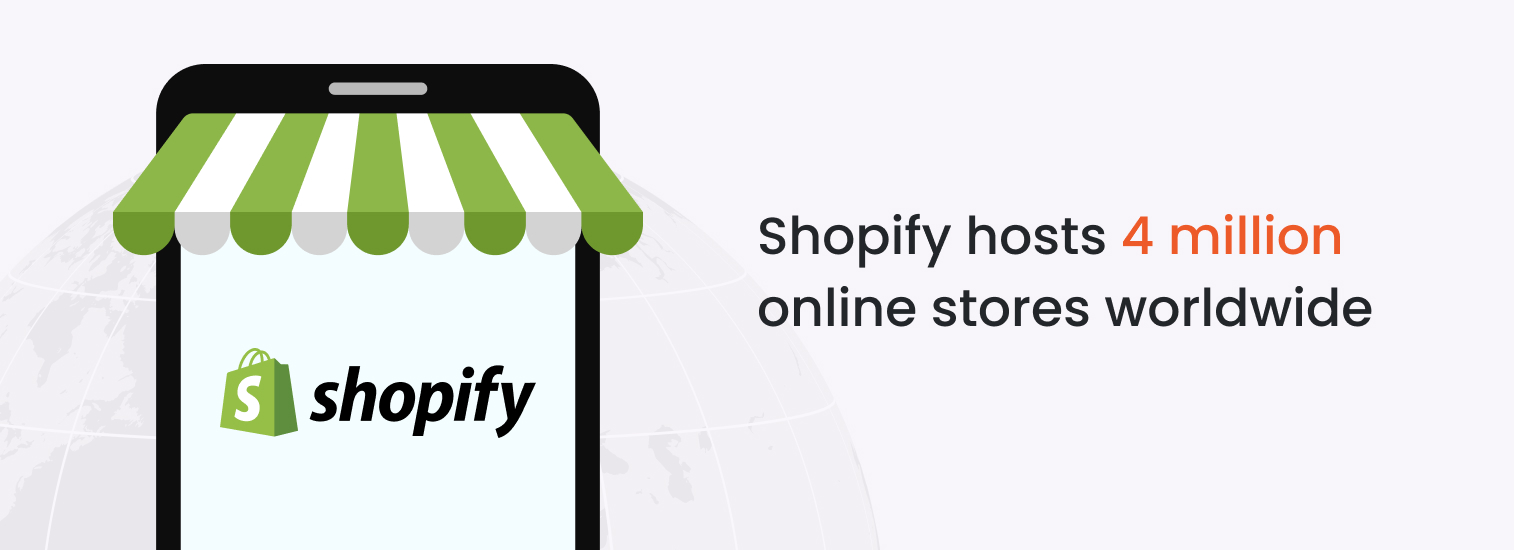
2. Shopify’s market share
Shopify holds a significant 17.15% market share in the global ecommerce software market.
Next to its major competitors, such as WooCommerce and Magento, Shopify’s ecommerce market share reflects its ability to meet the needs of a diverse range of Shopify merchants.
Its ease of use and powerful tools and integrations make it a preferred choice for both beginners and seasoned ecommerce professionals.
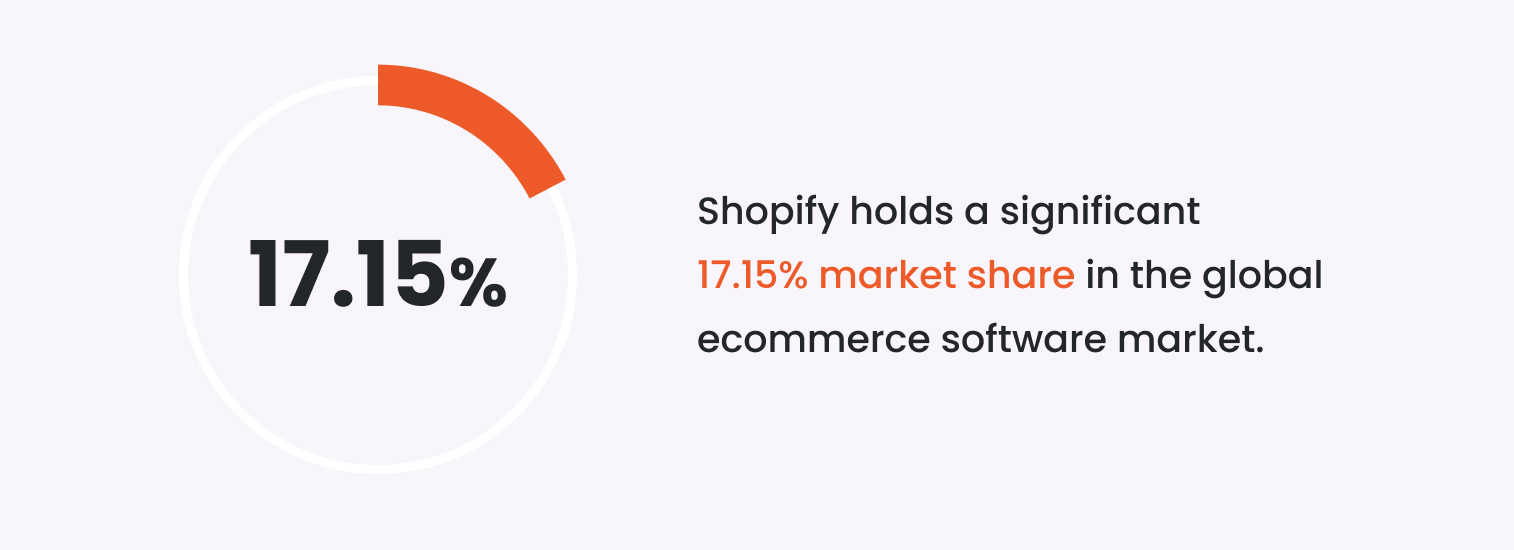
3. Total sales on Shopify
Shopify merchants have collectively generated over $543 billion in sales.
This impressive figure underscores the platform’s capability to support successful online businesses.
From small startups to large enterprises, Shopify’s infrastructure is designed to handle massive volumes of transactions, ensuring smooth operations and reliable performance.
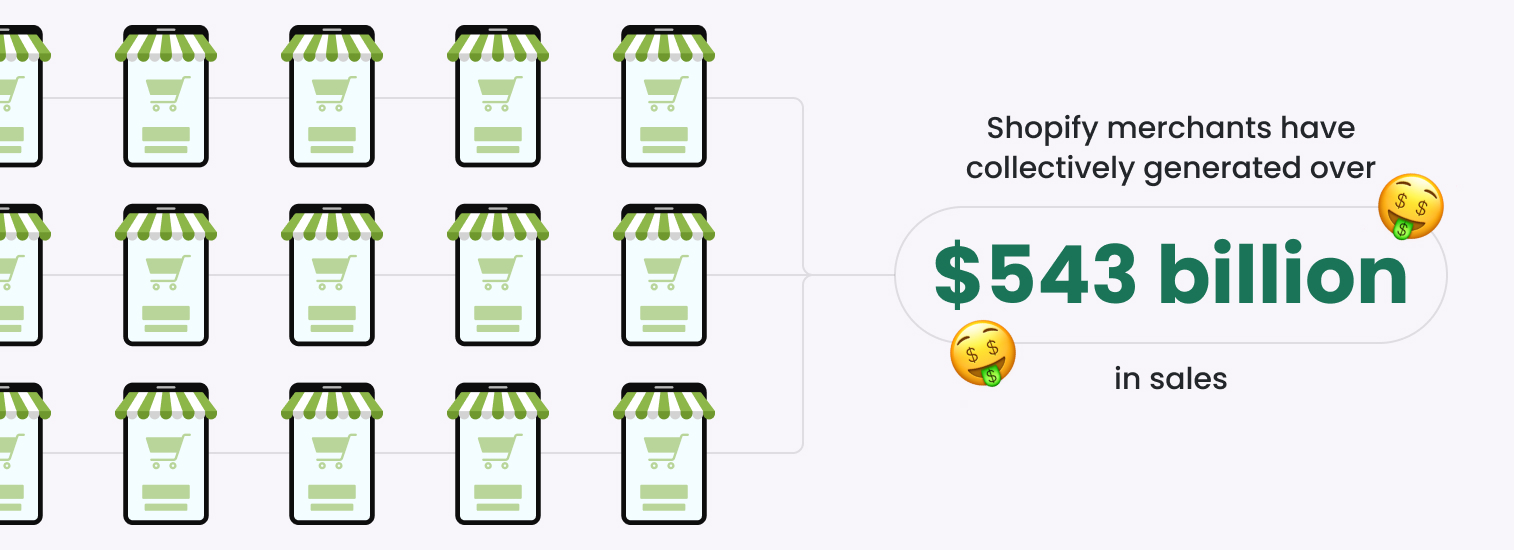
4. Shopify’s popularity in the US
In the United States, Shopify powers about 27% of all e-commerce websites.
It’s a go-to choice for many American online retailers, solidifying its standing in one of the largest ecommerce markets.
This widespread adoption is driven by Shopify’s comprehensive suite of tools tailored to meet the needs of U.S.-based businesses, from tax compliance features to shipping integrations with major national carriers like UPS and FedEx.
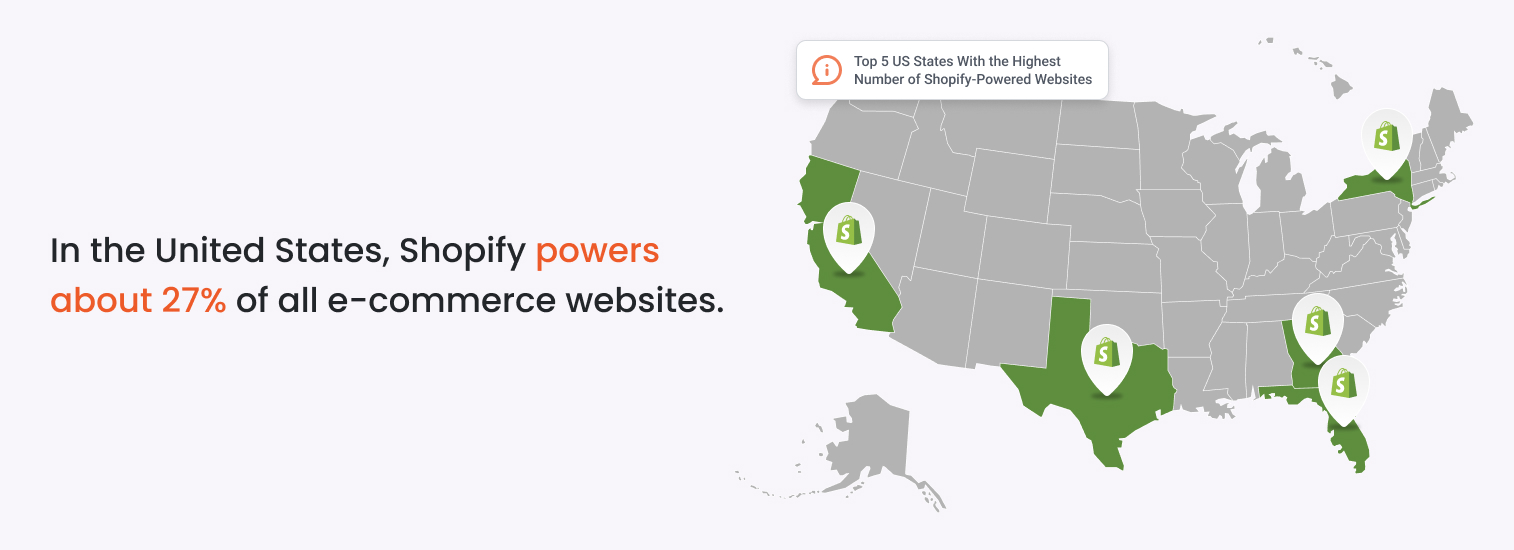
5. Global reach
Operating in 175 countries, Shopify allows merchants to sell their products worldwide with ease, tapping into a global customer base.
This extensive reach means that no matter where you’re located, Shopify provides the resources and support you need to expand your business internationally.
Features like multi-currency support and localized payment options make it easier for Shopify stores to cater to customers from different regions, breaking down barriers to global commerce.

6. Shopify’s mobile traffic
Mobile commerce is booming, and Shopify is leading the way.
Approximately 79% of traffic to Shopify online stores comes from mobile phones, highlighting the importance of mobile optimization.
As more and more consumers shop on their mobile phones and tablets, Shopify’s responsive design templates and seamless mobile shopping experience helps merchants capture and convert mobile traffic effectively.
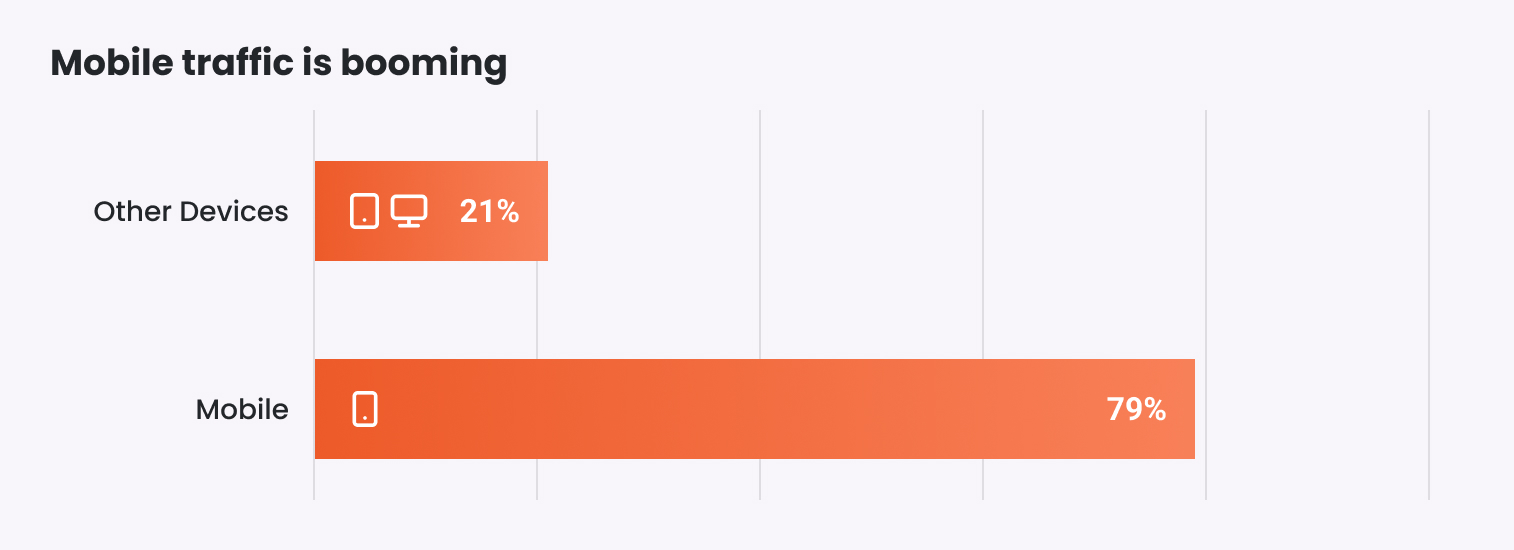
7. Conversion rates of Shopify stores
Shopify stores boast an average conversion rate of 1.3%. While this might seem modest, it is quite competitive in the e-commerce world and indicates efficient sales processes.
Conversion rates can vary widely based on industry, product type, and marketing strategies, but Shopify’s built-in tools for SEO, abandoned cart recovery, and customer reviews help business owners optimize their stores for more conversions.
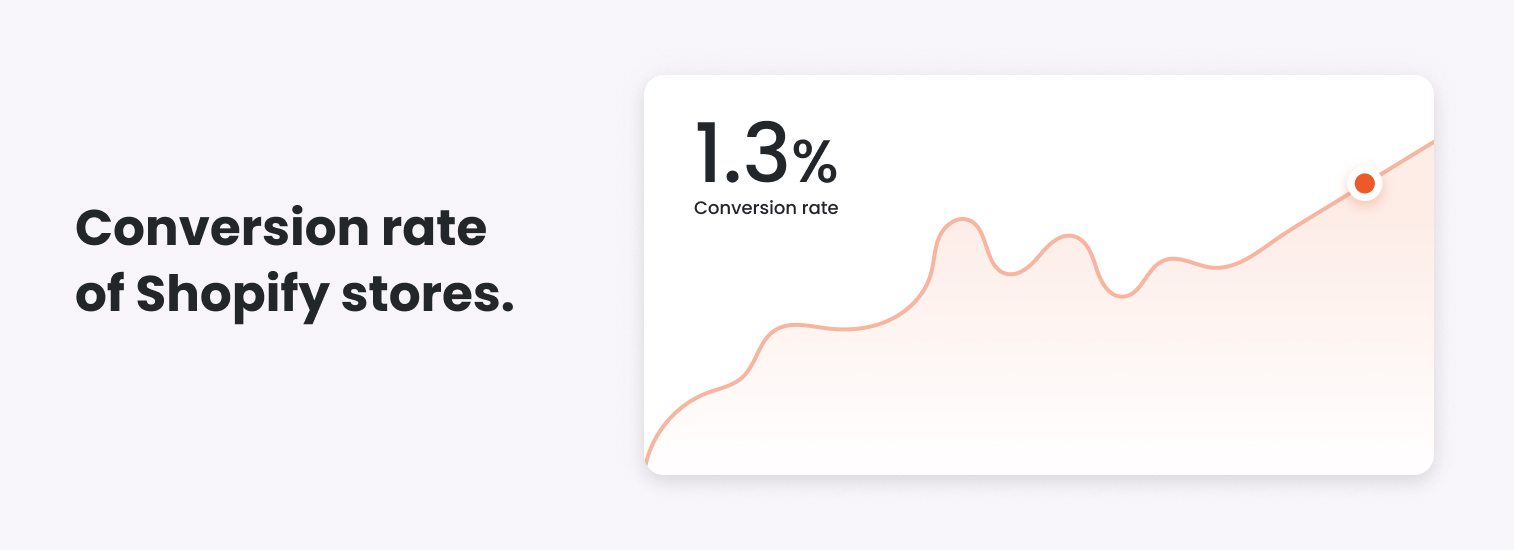
8. Fast-growing market
Shopify’s revenue grew by 57% year over year in 2023.
As more businesses recognize the benefits of ecommerce, Shopify’s comprehensive, scalable solutions make it an attractive choice for both new and established businesses to grow in retail ecommerce sales.
The continuous addition of new features and improvements ensures that Shopify remains at the cutting edge of the ecommerce industry.
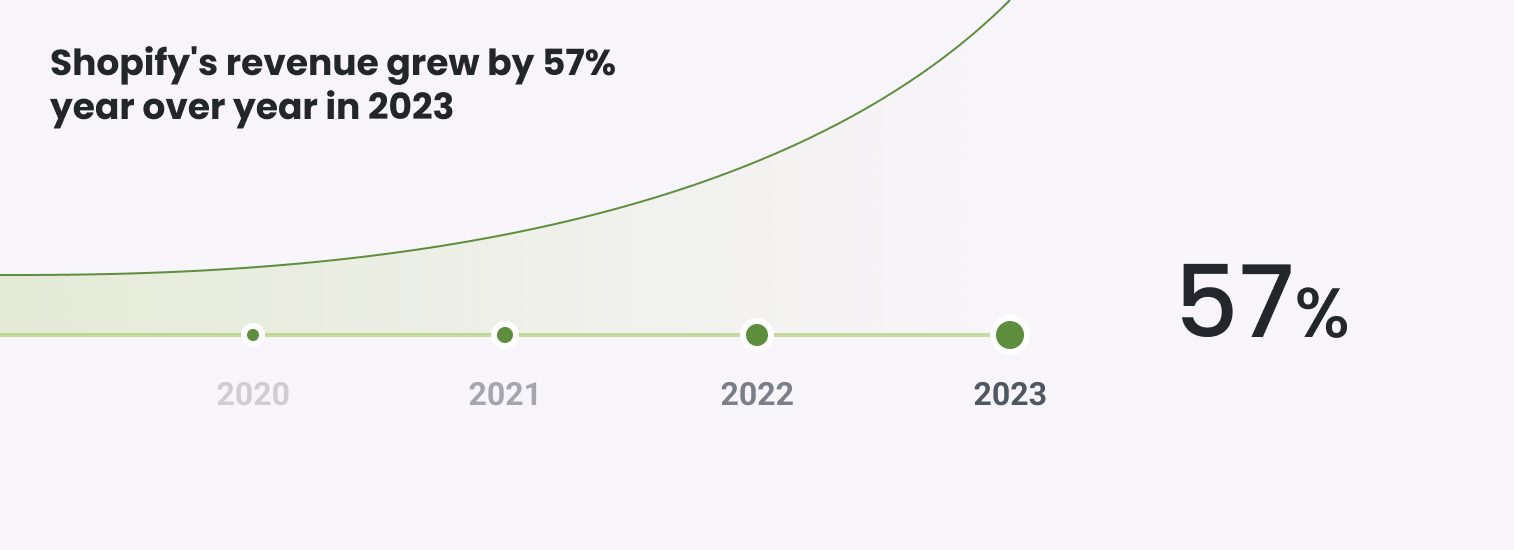
9. Shopify App Store
With over 8,000 Shopify apps available (including OptiMonk), the Shopify App Store helps store owners enhance functionality.
These third party apps cover a wide range of needs, from marketing and SEO to inventory management and customer service.
The ability to easily integrate these apps means that Shopify merchants have nearly endless customization options, enhancing their operations and providing a better shopping experience for their customers.
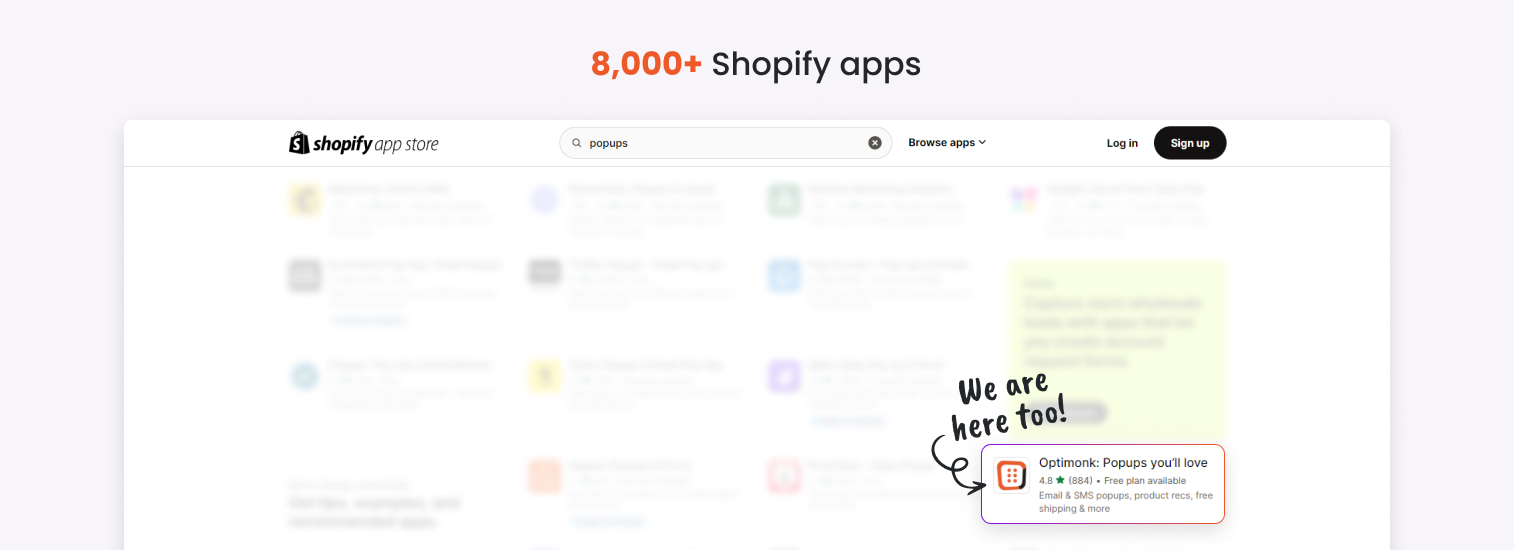
10. Customizable themes
Shopify offers over 100 customizable themes. These themes enable ecommerce store owners to create unique, professional-looking online shops without needing extensive design skills.
Each theme is fully responsive and can be tailored to match the brand’s identity, ensuring a consistent and appealing look across all devices.
The availability of both free and premium themes provides options for every budget, allowing the average Shopify merchant to invest in their store design without breaking the bank.
11. Shopify Plus for enterprises
Shopify Plus is an enterprise version designed for high-growth, high-volume merchants. Over 40,000 companies, including major brands like Heinz and Gymshark, use Shopify Plus.
Shopify Plus offers advanced features, dedicated support, and enhanced customization options, making it ideal for businesses with complex needs and significant traffic.
Its ability to integrate with existing systems and its scalability make it a robust solution for enterprise-level ecommerce.
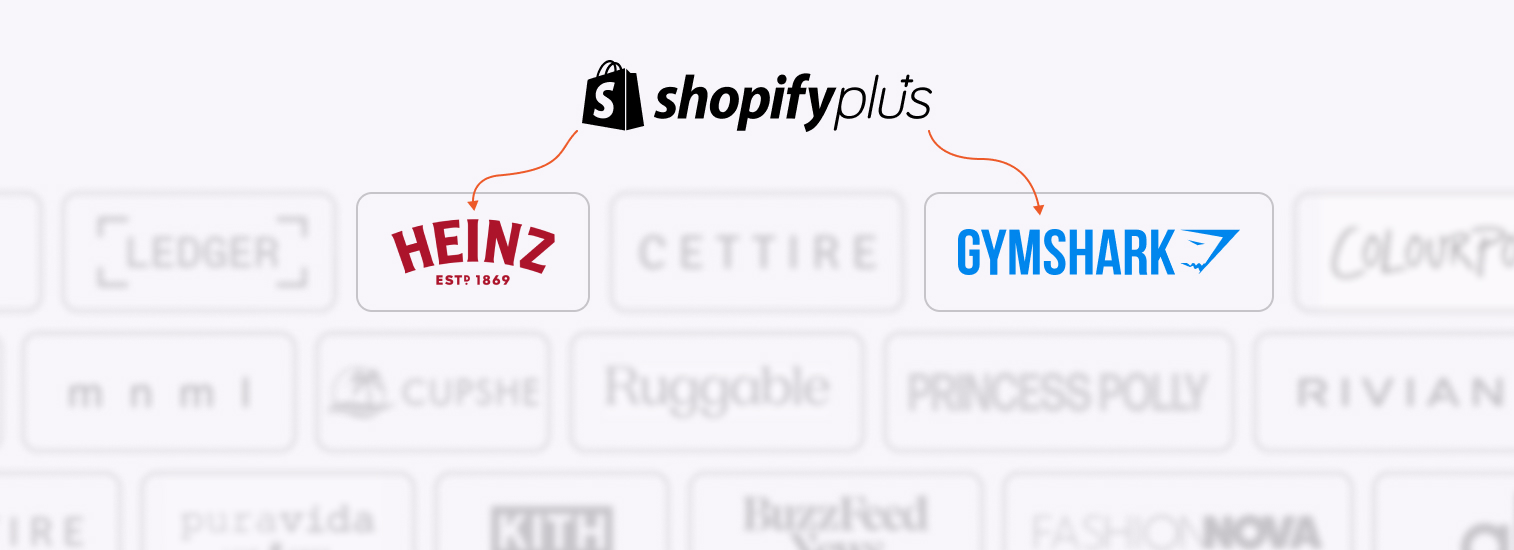
Shopify's Q1 2024 financial results
These additional statistics, taken from Shopify’s press release, highlight their strong financial performance and growth trajectory in 2024.
12. Revenue growth
In Q1 2024, Shopify’s total revenue grew by 23% year-over-year, reaching $1.9 billion. When adjusting for the sale of logistics businesses, the growth rate was 29%.
This revenue growth reflects Shopify’s market capitalization in online commerce and its ability to attract new merchants while retaining and upselling to existing ones.
The company’s strategic focus on enhancing its product offerings and expanding its ecosystem continues to drive financial success.
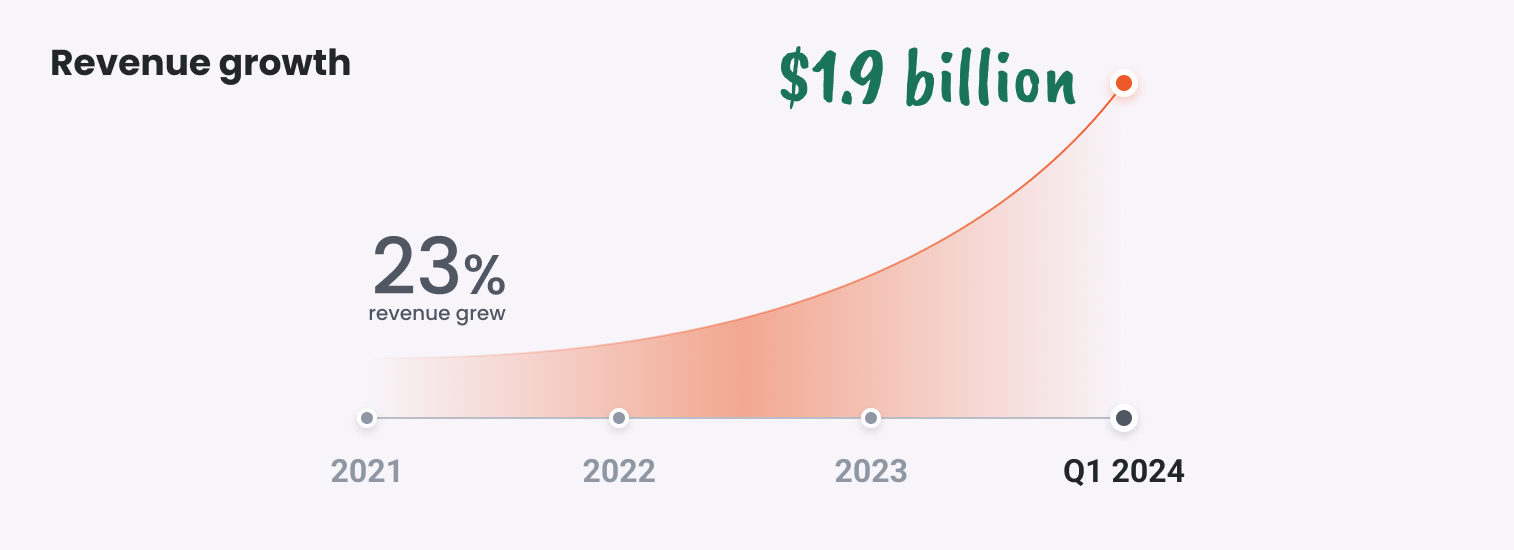
13. Gross merchandise volume (GMV)
Shopify’s GMV increased by 23%, totaling $60.9 billion in Q1 2024. This represents an $11.3 billion increase from the previous year, showcasing the platform’s ability to drive online sales.
The growing GMV indicates that more merchants are choosing Shopify, and also shows that Shopify stores are succeeding on the platform.
This growth is fueled by a combination of factors, including effective marketing tools, reliable infrastructure, and a wide range of third-party integrations that help merchants optimize their sales strategies.
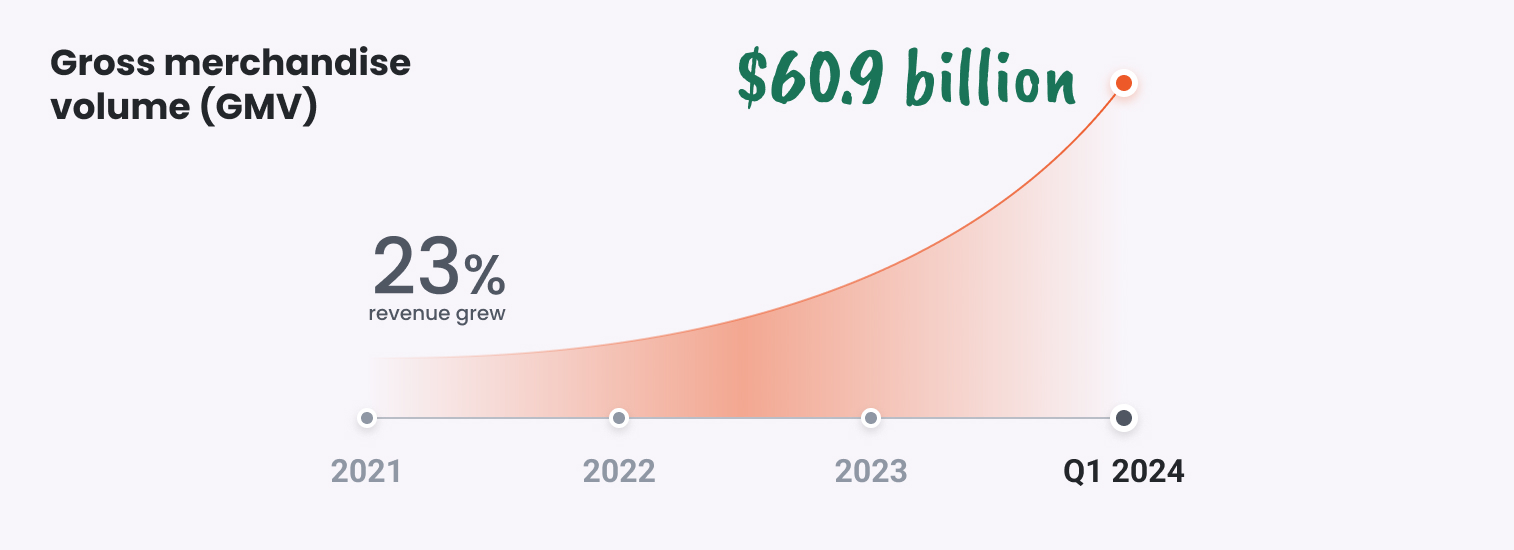
14. Merchant Solutions revenue
Merchant Solutions revenue rose by 20% to $1.4 billion, driven by GMV growth and increased use of Shopify Payments, indicating strong merchant engagement.
Merchant Solutions includes various services beyond the core ecommerce platform, including payment processing, shipping, and capital.
The increased adoption of these services suggests that merchants are leveraging Shopify’s ecosystem to streamline their operations and improve efficiency.
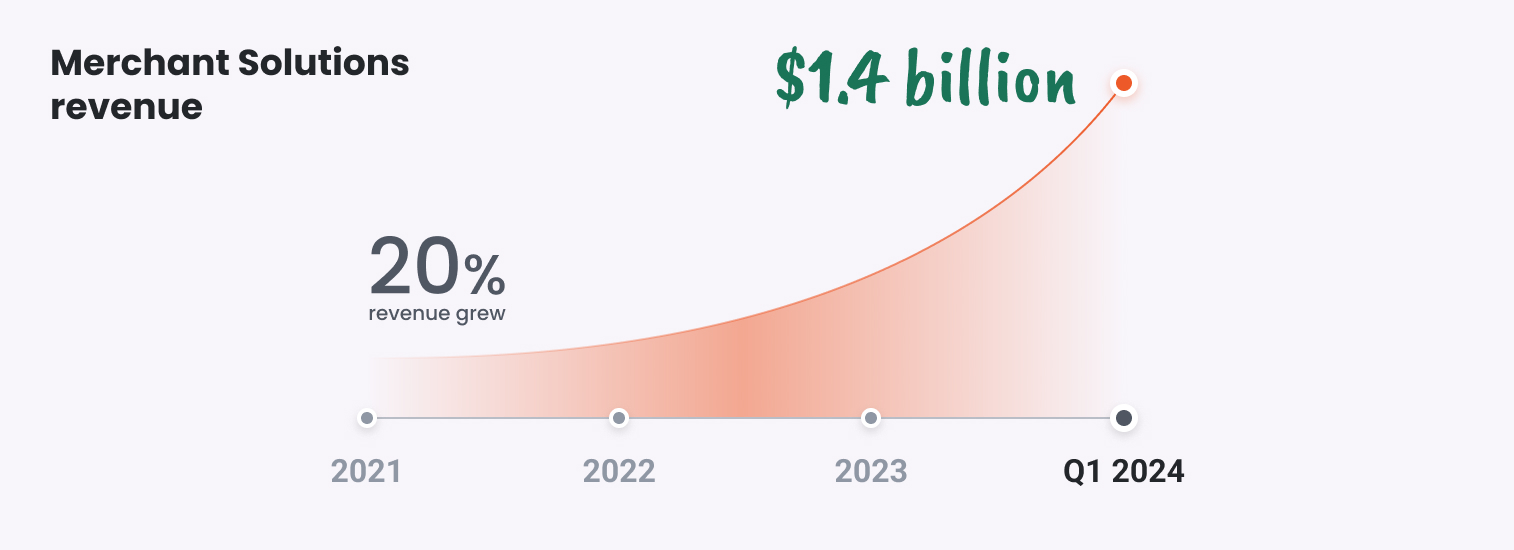
15. Gross payments volume (GPV)
GPV grew to $36.2 billion, representing 60% of GMV processed in the quarter, up from $27.5 billion (56%) in Q1 2023, reflecting the growing preference for Shopify Payments.
Shopify Payments simplifies the payment process for merchants, offering competitive rates and seamless integration with the Shopify platform.
The increase in GPV indicates that more merchants are choosing Shopify’s in-house payment solution over third-party alternatives, benefiting from its ease of use and reliability.
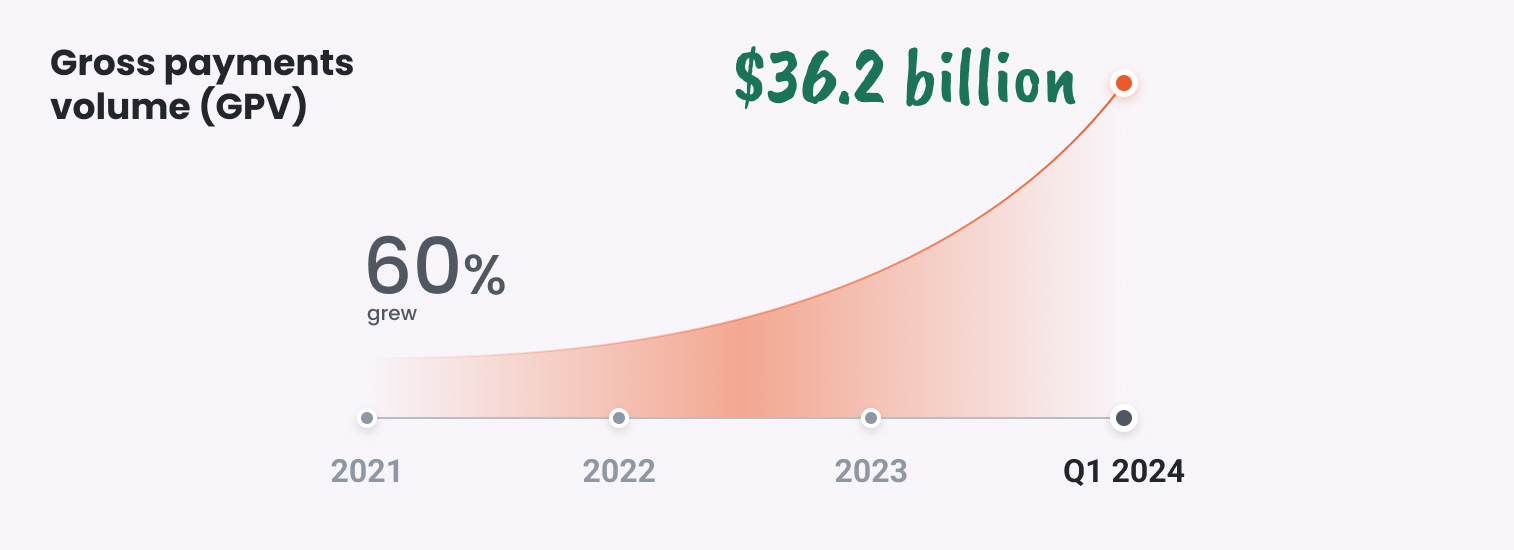
16. Subscription Solutions revenue
Subscription Solutions revenue saw a notable 34% increase, reaching $511 million.
This growth was fueled by a rising number of merchants and strategic pricing adjustments. Subscription Solutions revenue is derived from subscription fees paid by merchants to access Shopify’s platform.
The increase in this revenue stream highlights Shopify’s success in attracting new merchants and retaining existing ones, thanks to its continuous improvements and value-added features.
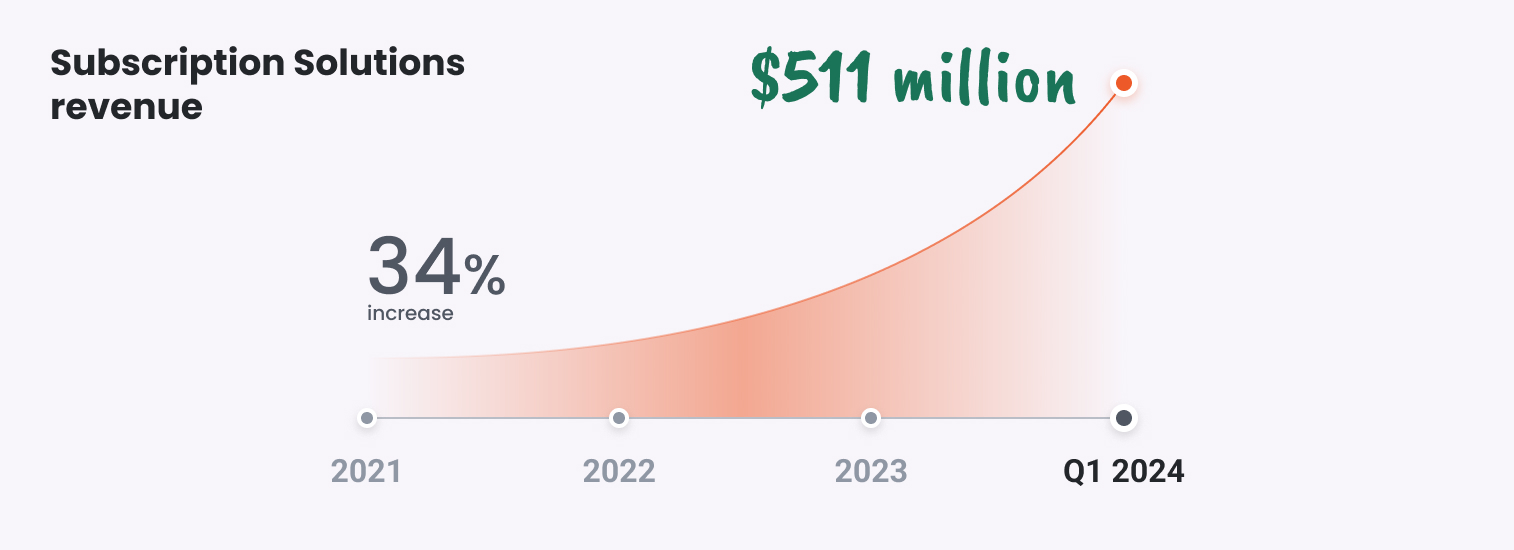
17. Monthly recurring revenue (MRR)
MRR, as of March 31, 2024, increased by 32% to $151 million, with Shopify Plus contributing $48 million to this total, underscoring the value of premium offerings.
MRR is a key metric for subscription-based businesses, reflecting the predictable, recurring revenue from active subscriptions.
The significant contribution from Shopify Plus highlights the platform’s ability to attract larger, more established businesses willing to invest in advanced features and dedicated support.
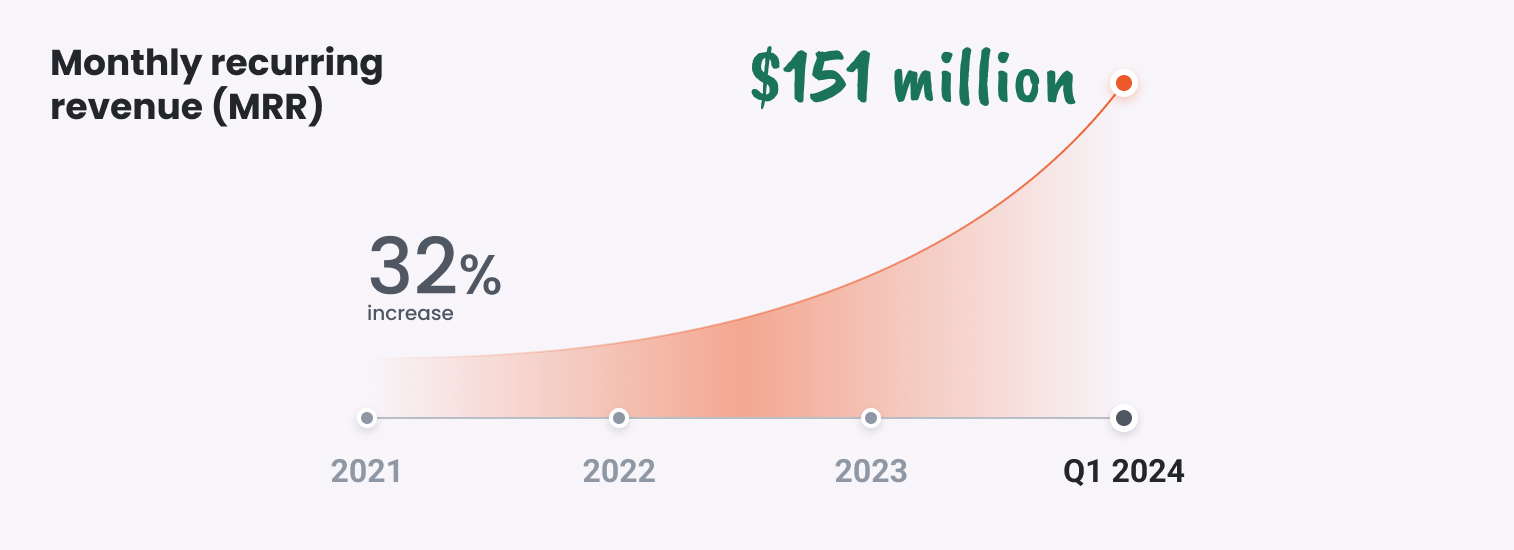
18. Gross profit growth
Shopify continues to show robust financial performance, with gross profit growing by 33% to a total of $957 million. The gross margin improved to 51.4%, up from 47.5% in Q1 2023, indicating efficient cost management and profitable operations.
The increase in gross margin suggests that Shopify is effectively controlling its costs while increasing its revenue, leading to healthier profit margins.
This financial strength enables Shopify to reinvest in its platform, driving further innovation and growth.
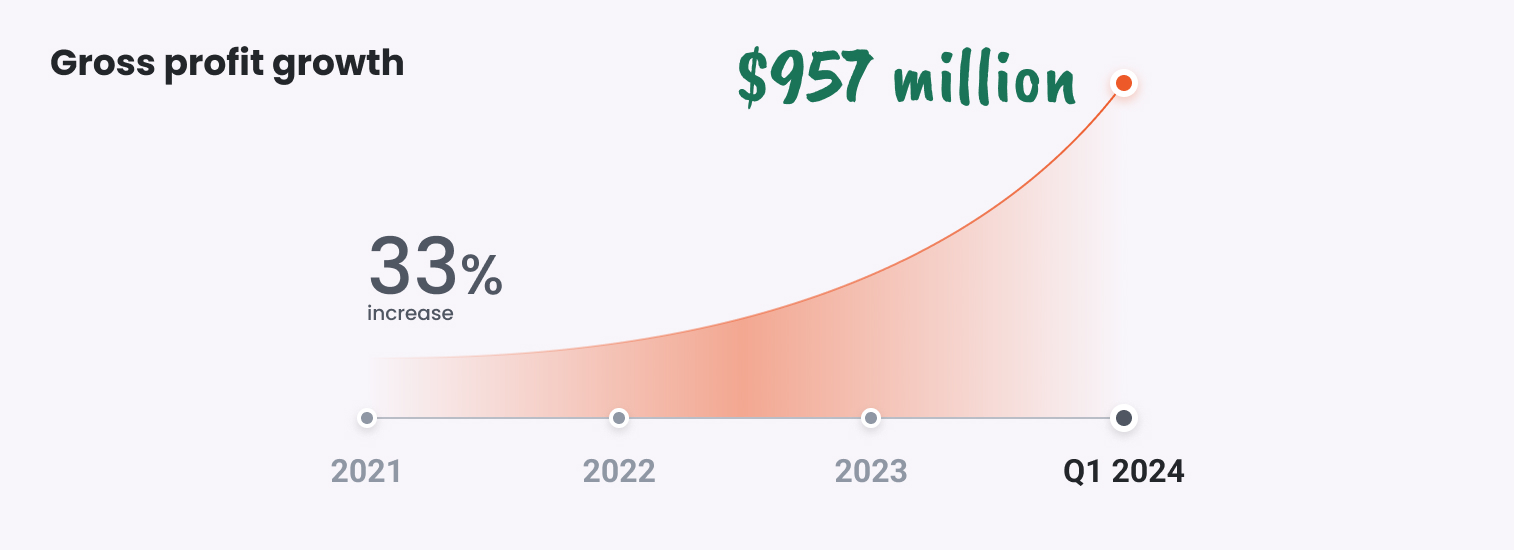
19. Free cash flow
Free cash flow doubled year-over-year, reaching $232 million with a free cash flow margin of 12%, compared to 6% in the previous year.
This growth enhances Shopify’s financial flexibility. Free cash flow is a critical measure of a company’s ability to generate cash after accounting for capital expenditures.
The doubling of free cash flow indicates that Shopify is not only growing its revenue but also managing its expenses effectively, providing the resources needed for stability and future investments.
20. Cash reserves
As of March 31, 2024, Shopify had $5.2 billion in cash and marketable securities, with a net cash position of $4.3 billion after accounting for outstanding convertible notes.
This strong cash reserve provides a solid foundation for future investments and growth.
Having substantial cash reserves allows Shopify to weather economic uncertainties, invest in new technologies, and potentially make strategic acquisitions to further enhance its platform and market position.
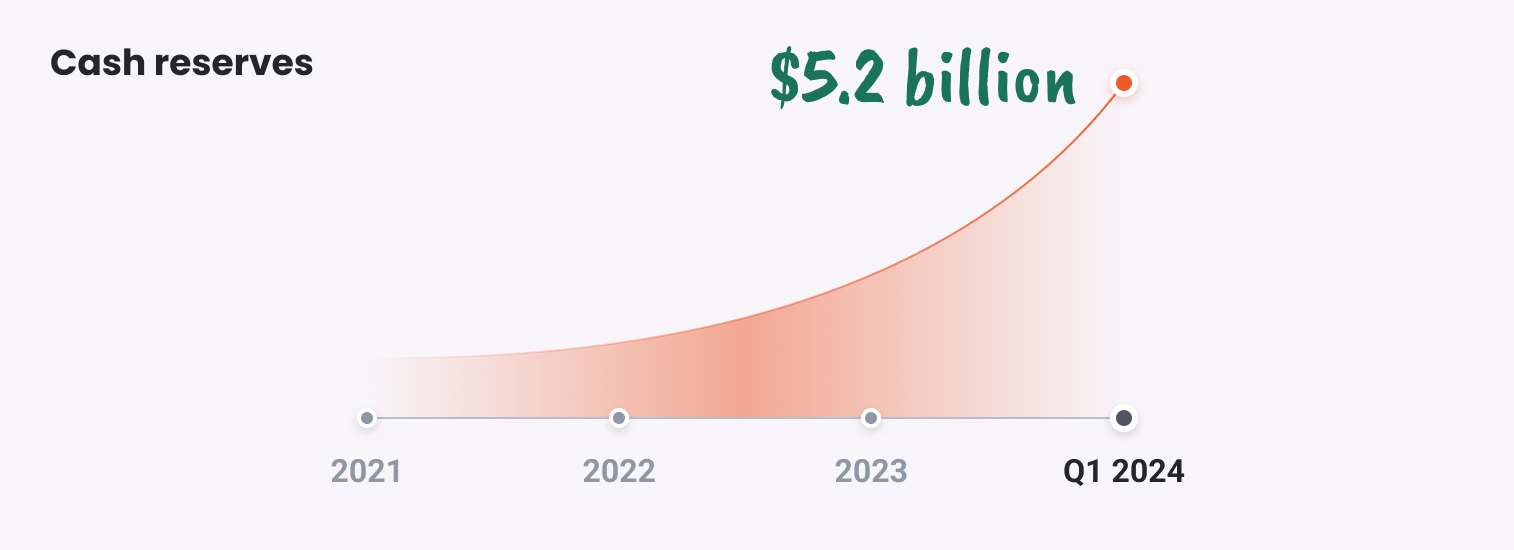
FAQ
How do I see store stats on Shopify?
To see your store stats on Shopify, go to the Analytics section in your Shopify admin dashboard. Here, you can view reports on sales, customer behavior, and other key performance indicators.
What percentage of Shopify stores are successful?
The success rate of Shopify stores can vary widely depending on the industry, marketing strategies, and other factors. However, with the right approach, many Shopify merchants find significant success.
What is the average profit of a Shopify store?
The average profit of a Shopify store can vary significantly based on the business model, profit margins, and operational costs. Some stores achieve high profitability, while others may have more modest profits.
Wrapping up
There you have it: all the must-know Shopify statistics.
From its extensive global reach to its robust financial health, Shopify offers a comprehensive solution for online merchants.
Whether you’re looking to start a new online store or scale an existing one, these insights into Shopify’s capabilities and growth can guide your strategy for success in 2025.
Buckle up and start your journey today!
Migration has never been easier
We made switching a no-brainer with our free, white-glove onboarding service so you can get started in the blink of an eye.

What should you do next?
Thanks for reading till the end. Here are 4 ways we can help you grow your business:
Boost conversions with proven use cases
Explore our Use Case Library, filled with actionable personalization examples and step-by-step guides to unlock your website's full potential. Check out Use Case Library
Create a free OptiMonk account
Create a free OptiMonk account and easily get started with popups and conversion rate optimization. Get OptiMonk free
Get advice from a CRO expert
Schedule a personalized discovery call with one of our experts to explore how OptiMonk can help you grow your business. Book a demo
Join our weekly newsletter
Real CRO insights & marketing tips. No fluff. Straight to your inbox. Subscribe now
Barbara Bartucz
- Posted in
- Ecommerce
Partner with us
- © OptiMonk. All rights reserved!
- Terms of Use
- Privacy Policy
- Cookie Policy
Product updates: January Release 2025








